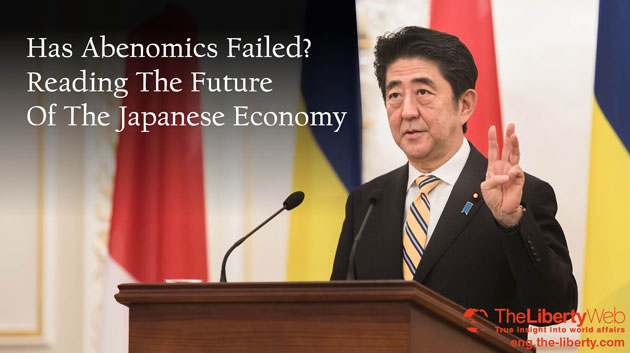Has Abenomics Failed? Reading The Future Of The Japanese Economy
Brad Glosserman, executive director of the Pacific Forum at the American think tank CSIS (Center for Strategic and International Studies), announced that the ‘three arrows’ of Abenomics have failed, providing a negative critique of the future of the Japanese economy.
Glosserman noted that Prime Minister Shinzo Abe’s ‘three arrows’ aimed to raise Japan’s GDP to ¥600 trillion, but that would require a 3% economic growth per annum. That has not been seen in Japan since 1991. He added that at the current rate, reaching the ¥600 trillion mark would be impossible.
He mentioned that Abe’s encouragement of female workers has been admirable, but that it would not solve the issue of insufficient labor power in construction and welfare work. He also explained that accepting immigrants could solve the labor power insufficiency problem, but Japan is unwilling to open its doors to large numbers of overseas immigrants.
What Is Hindering Economic Growth?
In his warning, Glosserman held that the primary problem lies in Japan’s declining population. Other reasons for Japan’s economic stagnation, however, also come to mind. For instance, that for over 20 years the Japanese government has been a big government with increasing power.
More specifically, there is the issue of tax increase. As Glosserman mentioned, Japan’s economy has been stagnant since the ‘bubble’ burst, and increases in the consumption tax rates have been a huge factor of this.
Unlike in the western countries, consumer society is rather new in Japan. To increase consumption taxes in such a country makes consumers withdraw their wallets, leading to decreases in the consumption rates, subsequently causing economic declines. In 2017, the consumption tax rate is due to rise still again to 10%. Doing so in the current economic decline means further declines in consumption, leading to a serious economic recession.
Another reason is government intervention in private enterprises. With the inauguration of the Abe administration in 2012, the old ‘three arrows’ of Abenomics included ‘easing of restrictions’ as one of its merits. The intention was to make agriculture and medical care public enterprises, and also to introduce ‘freedom’ into corporate actions.
This year, however, far from the idealized ‘freedom’, the government began to place extreme demands – such as lowering prices and raising employee pay – on corporations. These actions revealed Abe’s anxiety at the failure of Abenomics.
In order for the economy to grow, there is a need to make corporate economic movement more active, which in turn requires a ‘small government’.
For instance, with regards to taxes, we ought to aim for economic growth through a large-scale lowering of taxes, which would raise the rate of consumption and investment. This means, consumption taxes should not be raised to 10%, but should in fact be lowered to 5%.
The Abe administration plans to promote itself based on the appearance that the economy looks as though it has improved in order to gather supporters for the Upper House election. The citizens must not be fooled.
The government should free up private enterprises to move how they want to instead of keeping them chained. This way, not only will the potential in Japanese companies really bear fruit, it will also spark a flame of action in foreign companies and people who are working Japan.
If this is done, Japan’s GDP will be sure to surpass the ¥600 trillion mark.



















